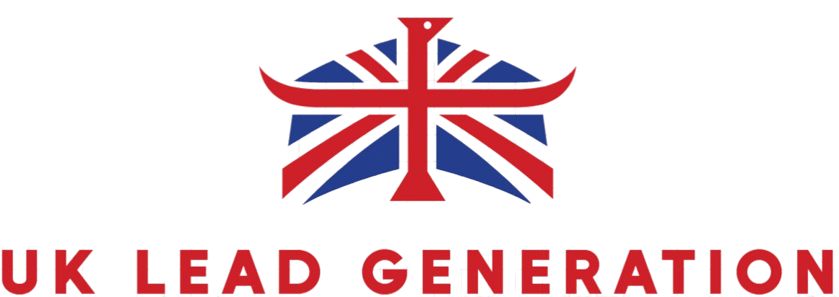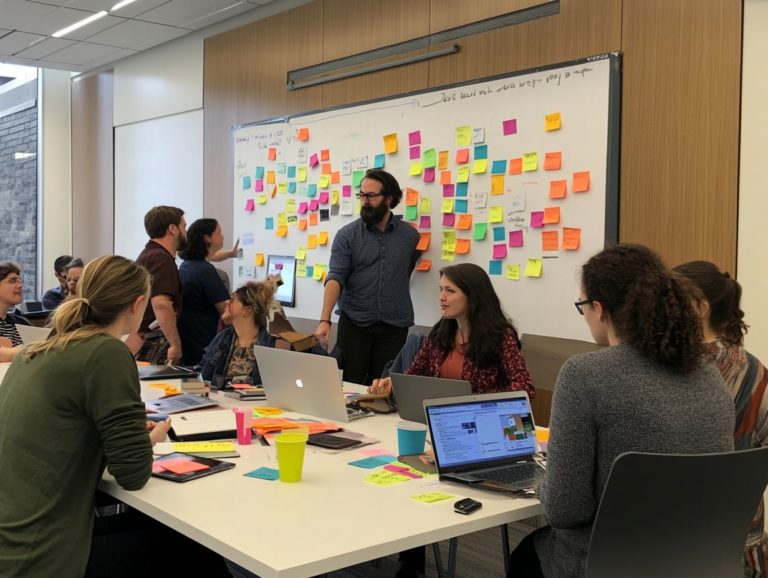How to Use Social Media for Audience Research
Let's Set Up Your Lead Generation Strategy
Fill out the form below, and our team will get in touch with you to create a tailored solution for your business.
In today s digital landscape, grasping the nuances of your audience is more essential than ever, particularly on social media. With a multitude of platforms and constantly shifting trends, understanding who your followers are and what they desire can elevate your online presence significantly.
This discussion delves into the significance of audience research while providing you with practical tools and techniques to gather invaluable insights. By harnessing social media analytics and actively engaging with online communities, you ll uncover ways to shape your strategy and create content that truly resonates. This ensures you remain ahead of the curve.
Contents
- Key Takeaways:
- The Importance of Audience Research for Social Media
- Tools and Techniques for Gathering Audience Insights
- Let's Set Up Your Lead Generation Strategy
- Using Audience Research to Inform Social Media Strategy
- Staying Up-to-Date with Audience Trends
- Let's Set Up Your Lead Generation Strategy
- Frequently Asked Questions
- Let's Set Up Your Lead Generation Strategy
Key Takeaways:

- Understand your target audience before creating your social media strategy. This will help you produce relevant and engaging content.
- Use various tools and techniques, such as social media analytics, surveys, and online communities, to gather audience insights that inform your strategy.
- Stay up-to-date with audience trends by monitoring changes and utilizing feedback and engagement metrics. Doing so helps you remain relevant and effectively reach your target audience.
The Importance of Audience Research for Social Media
Audience research is a cornerstone of an effective social media strategy. By truly understanding your target audience, you can create tailored content that resonates with their behavior, preferences, and engagement metrics.
Using an array of tools and techniques, you can uncover valuable customer insights that enhance brand awareness and boost user engagement across platforms like Twitter, TikTok, and YouTube, while also considering market trends.
Understanding Your Target Audience
Understanding your target audience involves diving deep into audience demographics, psychographic data (information about interests and lifestyles), and behavioral analysis to uncover insights into customer preferences and trends.
Using methodologies like surveys, interviews, and focus groups enables you to gain a profound understanding of consumer mindsets. Demographic studies covering age, gender, income, and education levels lay the groundwork for comprehending your audience. Psychographic profiles reveal interests, values, and lifestyle choices, enriching your understanding of their motivations.
Combining these analyses sharpens your marketing strategies and cultivates stronger customer relationships. The true art of grasping consumer behavior lies in leveraging both qualitative and quantitative data, allowing you to tailor your offerings effectively. This ensures your messaging resonates and engages the audience you intend to reach.
Tools and Techniques for Gathering Audience Insights
To gather meaningful audience insights, you can harness a range of sophisticated social media tools and techniques. Using data collection methods like sentiment analysis, conducting social surveys, and leveraging analytics features offers in-depth engagement metrics and valuable competitor intelligence.
These strategies enable you to understand your audience on a deeper level, ultimately enhancing your brand s impact through effective data collection methods.
Social Media Analytics
Social media analytics is your secret weapon for measuring engagement metrics and understanding how your content performs across various platforms with advanced analytics features and data visualization.
These tools provide invaluable insights that enable you to refine your content strategies by effectively visualizing data trends and audience behavior. By leveraging engagement metrics, you can pinpoint which types of posts resonate most with your audience, leading to data-driven decisions that optimize your future content.
With analytics features like sentiment analysis and reach measurement, you can track brand perception and make informed adjustments as needed. In this rapidly changing digital landscape, leveraging social media analytics tools boosts your visibility and fosters deeper connections with your target audience, ensuring your content remains both relevant and impactful.
Start diving into your audience research today for a stronger social media strategy!
Surveys and Polls

Let's Set Up Your Lead Generation Strategy
Fill out the form below, and our team will get in touch with you to create a tailored solution for your business.
Surveys and polls serve as helpful tools for you to gather feedback and statistics about your audience. They enable you to collect valuable information directly from your target market.
By utilizing various types of surveys, such as customer satisfaction assessments, product feedback forms, and market research polls, you can gain a clearer picture of your audience’s preferences and behaviors. Engaging polls, especially on social media platforms, provide real-time insights into trending topics and customer interests.
Analyzing customer reviews using sentiment analysis tools that analyze customer feelings based on their reviews adds another layer of depth to your understanding. This reveals how emotions and opinions influence purchasing decisions. By combining these two types of data, you enrich your social media strategies, enabling yourself with the knowledge to tailor content, drive engagement, and ultimately enhance conversion rates.
Online Communities and Forums
Online communities and forums are helpful resources for social listening. They allow you to tap into customer preferences and gather feedback through direct engagement.
These platforms create an open space for consumers to express their thoughts about products and services. By actively participating in these discussions, you can gain insights into what resonates with your audience, identify emerging trends, and spot potential issues before they escalate.
Using this feedback now can dramatically improve your social media strategies. Tailoring your content to align with customer desires enhances engagement and fosters loyalty by genuinely prioritizing the voices of your customers.
Using Audience Research to Inform Social Media Strategy
Using audience research can supercharge your brand’s social media strategy. This approach lets you craft a more nuanced content strategy that resonates with the needs and preferences of your target audience.
Creating Relevant and Engaging Content
Creating relevant and engaging content is essential for capturing the attention of your target audience. By leveraging audience analysis, you can tailor content types that align perfectly with their preferences.
Understanding the demographics, interests, and behaviors of potential viewers allows you to use various formats like videos, infographics, and blog posts that resonate with them. Visual storytelling techniques are crucial, enabling you to communicate complex messages through captivating imagery and concise narratives.
Incorporating interactive elements like polls or quizzes enhances the user experience, transforming your content into something genuinely memorable. A robust content strategy grounded in audience insights ensures that each piece you produce fosters a meaningful connection and drives engagement.
Targeting the Right Platforms
Targeting the right social platforms is essential for maximizing engagement and reaching your ideal audience in today s evolving digital landscape.
By conducting thorough audience analysis, you can uncover insights into where your potential customers are most active. This understanding enables you to make strategic decisions about which platforms to invest in, ensuring your marketing efforts resonate with the desired demographic.
Engagement metrics likes, shares, and comments offer invaluable feedback on your content’s performance, enabling you to refine your approach. Staying attuned to current market trends will highlight emerging platforms that could capture significant audience attention, making timely adaptation crucial for maintaining visibility.
Start gathering insights today to transform your engagement tomorrow!
Staying Up-to-Date with Audience Trends

Let's Set Up Your Lead Generation Strategy
Fill out the form below, and our team will get in touch with you to create a tailored solution for your business.
Staying current with audience trends is crucial for brands seeking to maintain their relevance. This involves a commitment to continuous monitoring and an agile approach to adapting strategies based on real-time engagement metrics and trend analysis.
By doing so, you position your brand to resonate deeply with your audience. This allows you to navigate the ever-changing landscape of consumer preferences.
Stay Ahead: Monitoring and Adapting to Trends
Effective monitoring and adapting to changes in audience information are essential for grasping shifts in consumer behavior. This ensures that your social media strategies remain impactful.
Harness advanced analytics tools to unlock valuable data on audience engagement and preferences. Regularly examine metrics such as click-through rates, comments, and shares to gain a comprehensive view of your audience’s evolving needs.
Utilizing social listening tracking what people say about your brand online grants you real-time feedback. This allows for the swift identification of potential shifts in consumer sentiment.
Integrate these data-driven insights into your content strategy. This enhances your messaging’s relevance and fosters a deeper connection with your audience by addressing their changing interests and values.
Utilizing Feedback and Engagement Metrics
Utilizing feedback and engagement metrics is essential for refining your social media strategy. This enables you to leverage valuable customer insights collected through various methods.
Actively seek and analyze the perspectives of your audience through audience analysis to uncover trends and preferences. This builds a strong bond with your customers and boosts overall engagement metrics think likes, shares, and comments.
Understanding audience feedback allows you to pivot your strategies effectively through sentiment analysis. This ensures your content resonates with your target demographic.
Ultimately, integrating customer insights into your social media planning fosters meaningful interactions and enhances brand loyalty.
Frequently Asked Questions
Audience research gathers information about a specific group that a company wants to reach. It is vital for social media because it helps businesses understand their target audience‘s demographics, consumer behavior, interests, and needs. This information informs social media strategy and content.

Use social media for audience research by monitoring conversations on your platforms, employing social listening tools to track mentions and sentiments about your brand, and conducting social surveys or polls.
Social media audience research provides insights on your audience’s demographics, preferences, and behaviors. It reveals what content they engage with most and their opinions about your brand or industry.
Conduct market analysis and audience research regularly, especially when planning new campaigns. This helps you stay updated on changes in your audience’s behavior, ensuring your social media strategy remains relevant and effective.
Let's Set Up Your Lead Generation Strategy
Fill out the form below, and our team will get in touch with you to create a tailored solution for your business.
Engage with your audience by implementing these strategies and enhancing your brand’s connection with them!
Using social media for audience research offers businesses valuable insights for their marketing strategies. This includes understanding what competitors are doing and finding new opportunities.
It can also enhance customer engagement, boost brand awareness, and ultimately increase sales.
Social media is a great source for qualitative and quantitative data. However, not all social media users represent your target audience.
The data collected may not always be accurate or reflective of your entire audience. Always use multiple sources for comprehensive audience research.






